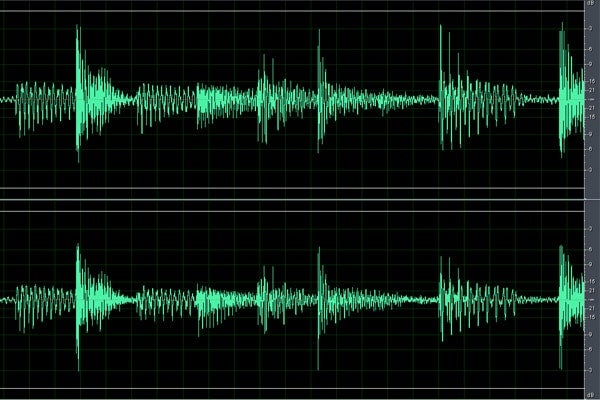
Good vibrations: using sound to treat disease
Published: May 4, 2012
Many of us love massages, but imagine a massage so deep that tissues, organs and cells could also be ‘massaged’.
That’s exactly what Vibroacoustic Therapy, a low frequency sound massage, is clinically proven to do, and new research at U of T suggests that it may help people with debilitating diseases.
“It is basically stimulating the body with very low sound – like sitting on a subwoofer,” said Professor Lee Bartel of the Faculty of Music. “But it requires special speakers that carry sound almost too low to hear in a way that changes it basically to something you feel instead of hear.”
Bartel and his team in the new Music and Health Research Collaboratory (MaHRC) are exploring the medical effects of low frequency sound and have shown that this therapy can play a key role in reducing the symptoms of Parkinson’s disease.
Vibroacoustic therapy (VAT) consists of low sound frequencies that are transmitted to the body and mind through special transducers that convert the sound to inner body massage. MaHRC associates Heidi Ahonen and Quincy Almeida treated two groups of Parkinson’s patients (20 with dominant tremor symptoms and 20 with slow/rigid movement symptoms) with five minutes of 30 Hz vibration.
Both groups showed improvements in all symptoms, including less rigidity and better walking speed with bigger steps and less tremor.
“There have been several studies using vibration from sound with Parkinson’s,” said Bartel “It has been known for over 100 years that vibration (like riding in a wagon on cobblestones) helped relieve some symptoms. So the scientific study of the effect of low frequency sound was a natural connection. Also known is that 40 Hz brain waves seem to be carriers of information between the parts of the brain that control movement. So adding extra stimulation in that zone should help that communication and so assist in movement control.”
Bartel, Founding and Acting Director of MaHRC, says the goal of low frequency sound studies with Parkinson’s is to determine which approach is most effective, how much and how often treatment is needed, and whether medication can be reduced. Vibroacoustic Therapy frequencies, between 20 and 100 Hz or pulses per second, correspond to brainwave activities and function that are currently being explored in neuroscience.
But the effects of Vibroacoustic Therapy extend beyond the brain. It also provides deep physical cellular stimulation to skin, muscles and joints, resulting in decreased pain and increased mobility. Like hand/mechanical massage, vibroacoustic therapy aids circulation, relaxes muscles, and feels good.
Bartel points to research that shows that “several medical conditions including Parkinson’s and neuralgic pain like fibromyalgia, may be related to a common brain mechanism – a brain rhythm disorientation between the inner brain and the outer cortex. Since the rhythmic pulses of music can drive and stabilize these, we speculate that low frequency sound might help in fibromyalgia as well as Parkinson’s.”
Bartel’s team is now looking at the role of vibroacoustic therapy as a treatment for patients with fibromyalgia.
“Although it is too early to form any conclusions, there is encouraging data indicating that treating fibromyalgia patients with doses of 40 Hz sound seems to reduce pain.”
“It is truly an exciting time for music medicine – the idea of developing audioceuticals (prescribable sound) points to a whole new direction for music therapy, and the potential for MaHRC to lead in this is very exciting for me” said Bartel.



